Hidden away on Gran Canaria’s southwestern coast, Puerto de Mogán just pulls you in. It’s like wandering into a sun-drenched Mediterranean postcard. Locals and travelers alike call it “Little Venice” thanks to the canals and bridges threading through whitewashed houses, with magenta bougainvillea tumbling everywhere. Honestly, you can’t help but stop for a photo every few steps.
Puerto de Mogán brings together the best of authentic Canarian culture and a dash of resort luxury, making it a sweet spot if you want to avoid the island’s bigger, busier tourist hubs. Instead of endless concrete hotels, this little town has held onto its fishing village roots. You’ll find golden beaches, a lively marina, and plenty of tempting places to eat.
When I visited, I realized Puerto de Mogán works perfectly as both a laid-back beach retreat and a home base for island adventures. I watched the sun sink into the Atlantic, browsed the legendary Friday market, and feasted on fresh seafood by the harbor. This town really does have something for both culture lovers and beach bums.

The Heart of Puerto de Mogán: Canals, Bridges, and Bougainvillea
Charming canals link the fishing port to the marina, creating that Mediterranean vibe that’s earned the village its famous nickname. Bright purple bougainvillea spills over the white buildings, and honestly, every corner feels like a photo waiting to happen.
The Story Behind ‘Little Venice’
People call Puerto de Mogán “Little Venice” because of the canals winding through the center. These little waterways connect the old fishing port with the newer marina.
It’s not exactly Venice, but the small bridges crossing the canals give it a similar charm—just on a more intimate scale.
The canals aren’t just for show. Boats actually use them to get between different parts of the harbor.
As I wandered along the water, I realized how unique this is for the Canary Islands. Most coastal towns here don’t have anything like it. Puerto de Mogán really stands out.
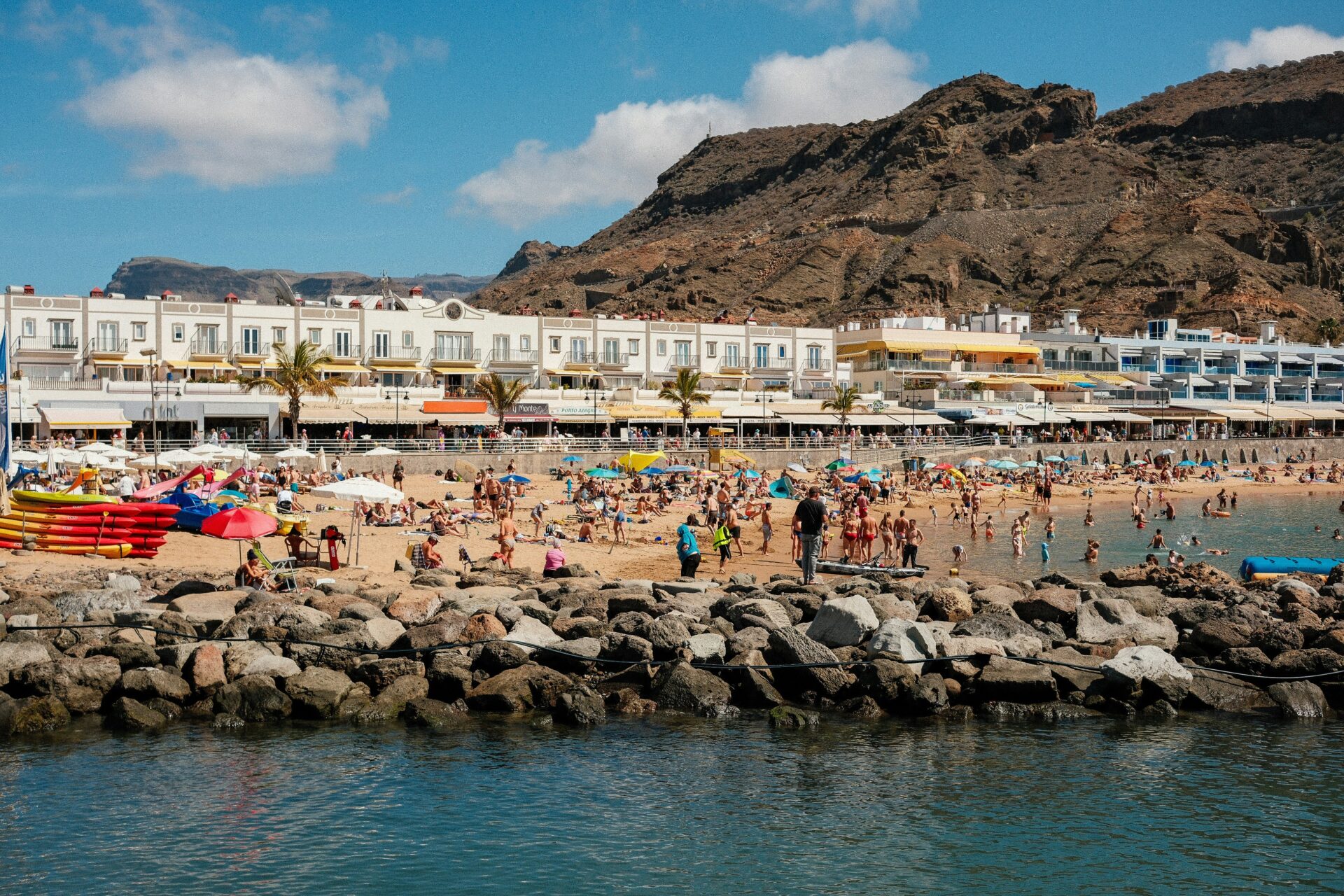
Walking the Picturesque Canals and Bridges
I lost track of time strolling along the canals, crossing every bridge I found. The stone walkways are lined with restaurants and cafes, perfect for a lazy wander.
The bridges themselves make great spots to pause and watch boats glide underneath. Some look pretty simple, others have decorative railings. Each one gives you a new perspective on the village.
My favorite canal walk:
- Start at the marina entrance
- Follow the main canal toward the fishing port
- Cross every bridge along the way
- Loop back on the other side
It takes about half an hour if you’re not in a rush. I’d go in the morning when it’s quiet and the sunlight feels soft.
The canals are shallow and clear. I spotted fish darting around more than once. The gentle sound of water against the stone walls just adds to the calm.
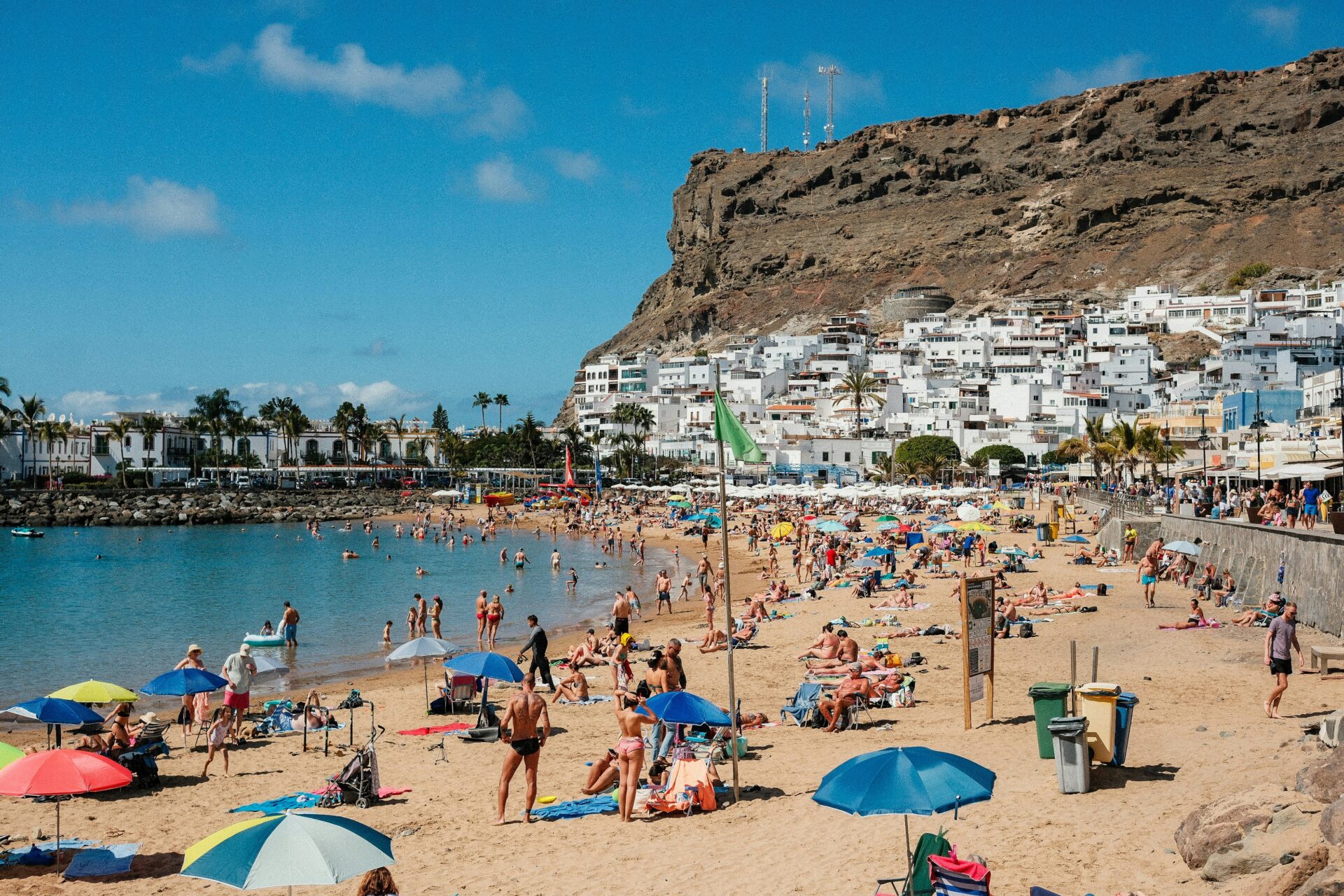
Photographing Iconic Whitewashed Buildings and Flowers
The whitewashed buildings pop against the blue sky. Every house sticks to the same simple, classic style—clean walls, traditional touches.
Bougainvillea is everywhere. Purple, pink, and red blooms tumble from balconies and archways, framing the canals and buildings in color.
Best spots for photos:
- Bridge by the marina: Great for capturing reflections
- Restaurant terraces: Nice elevated views of the waterways
- Flower-draped archways: Perfect for framing the village in blooms
Late afternoon is magic for photos. The light makes the flowers almost glow against the white walls.
Most balconies have flower boxes too, adding even more color. It all comes together to make Puerto de Mogán ridiculously photogenic.
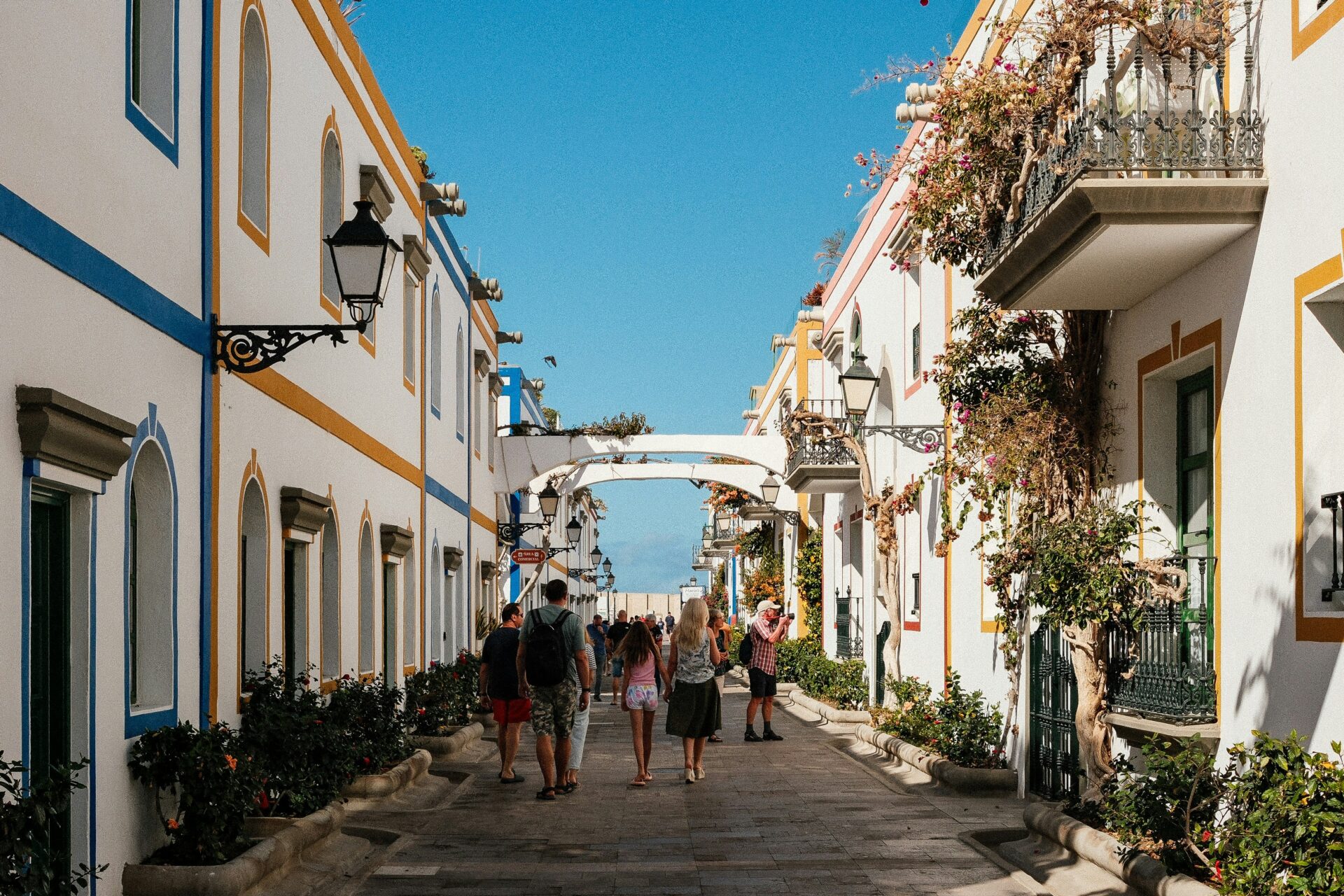
Exploring Puerto de Mogán’s Vibrant Marina and Waterfront
The marina sits at the heart of Puerto de Mogán. Colorful boats rock gently in the water, and seafront restaurants serve fresh seafood all day. I loved strolling the promenade in the evenings, watching the yachts and the sunset.
Yachts, Fishing Boats, and Nautical Atmosphere
The marina is a hive of activity. I saw traditional blue-and-white fishing boats unloading their catch next to sleek yachts from all over Europe.
Boats you’ll spot:
- Local fishing boats
- Private yachts, big and small
- Charter boats for day trips
- Glass-bottom boats for sightseeing
Mornings bring the fishermen heading out; afternoons, the excursion boats come back with sunburned tourists.
The bay stays calm, so boat trips here rarely get bumpy. The marina’s sheltered spot means even the biggest swells don’t make it in.
Everything around the marina feels nautical—rope railings, old anchors, the clatter of rigging. I could’ve watched the boat traffic for hours.

Dining at Seaside Restaurants
Restaurants hug the edge of the marina. I grabbed a table right by the water and tucked into seafood while boats drifted by.
Seafood highlights:
- Grilled local fish with Canarian potatoes
- Seafood paella loaded with prawns
- Octopus with garlic and paprika
Most places have outdoor terraces. In the evenings, the lights from the marina shimmer on the water—super atmospheric.
Chefs often pick their fish straight off the boats in the morning, so you know it’s fresh.
You’ll find everything from simple tapas bars to fancier spots. If you want a waterfront table at sunset, definitely book ahead.
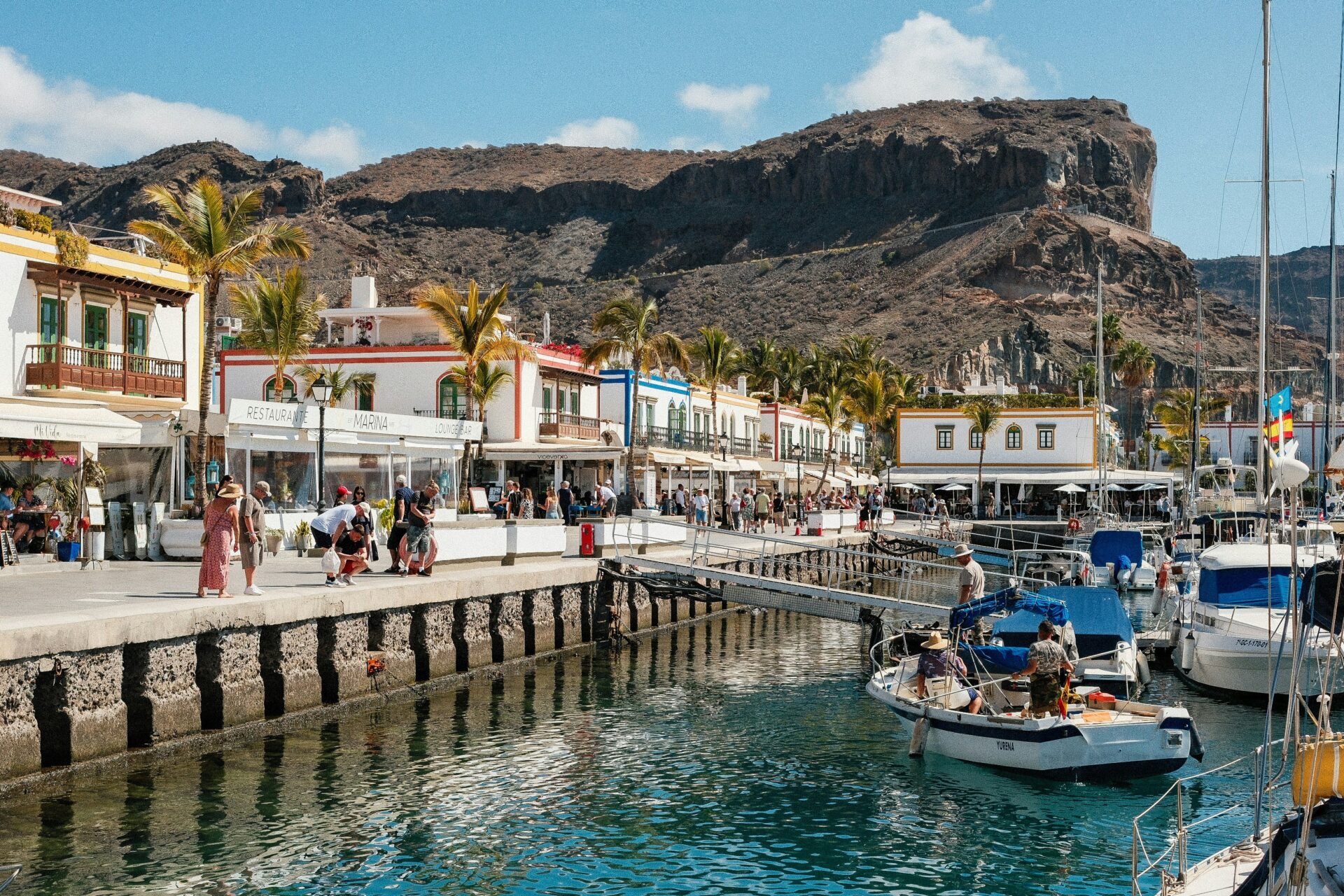
Promenade Experiences
The promenade links the marina to the canals. I walked it end to end more than once.
Palm trees and flowerbeds line the path. Benches invite you to sit and just watch the boats or people.
Little shops sell nautical souvenirs and local crafts. On Fridays, the market spills onto the promenade.
Evenings are the best. The lights reflect on the water, couples wander hand-in-hand, and the whole place feels relaxed.
Boat trips leave right from the promenade. I booked a few excursions at kiosks along the walkway.
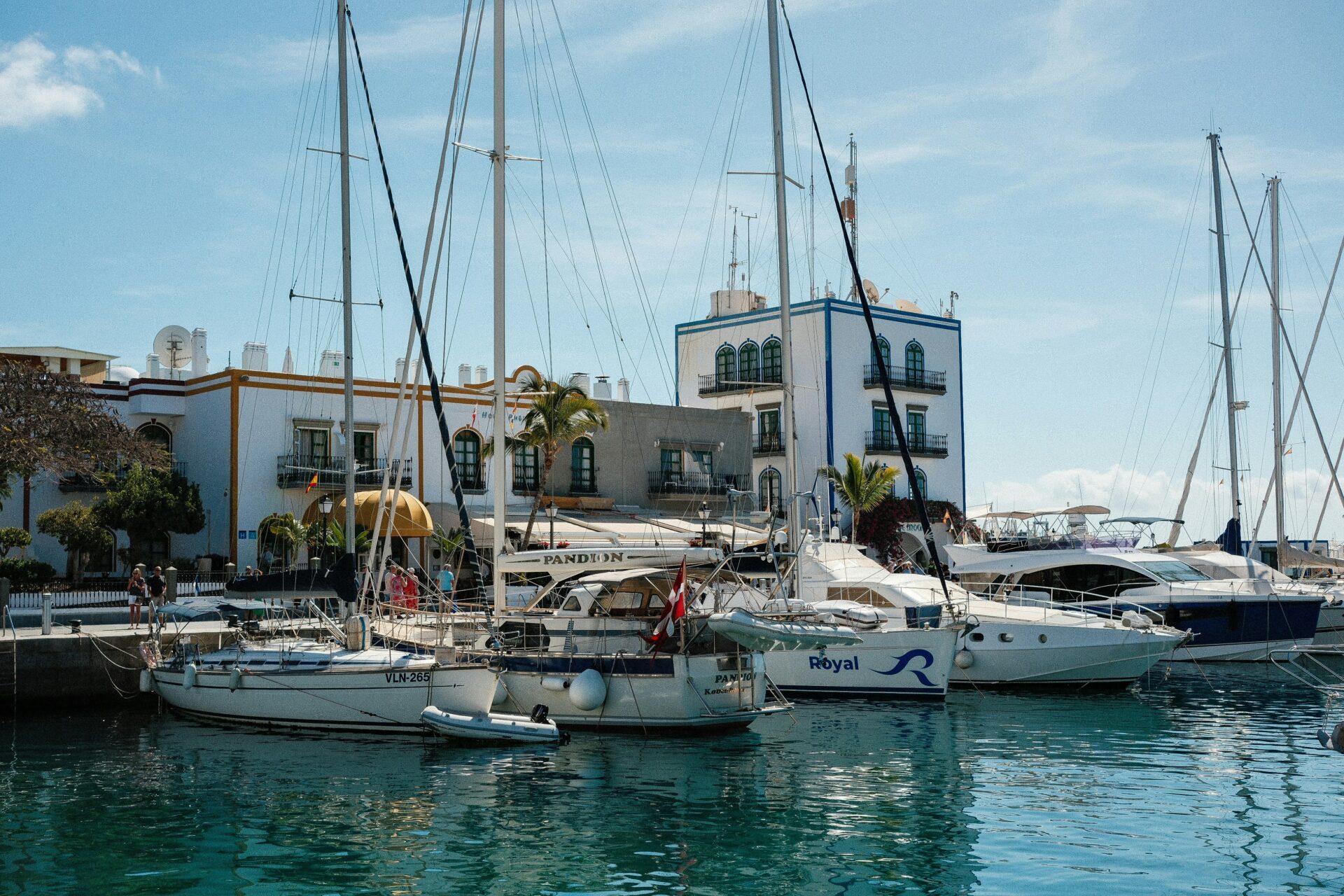
Beach Life: Playa de Mogán and Water Activities
Playa de Mogán is a crescent of golden sand (yep, imported from the Sahara) and gentle waves. The beach has all the facilities you’d hope for, and the clear Atlantic water is perfect for swimming, snorkeling, or just floating around.
Relaxing on Puerto de Mogán Beach
The beach sits in a little cove, so you don’t get rough waves. The sand is soft and feels great underfoot.
Despite its popularity, I found the beach pretty chill. The cliffs keep the wind down, so it’s a great spot for sunbathing.
It gets busy, but somehow it never feels packed. Early mornings are especially peaceful before the crowds roll in.
Best times to go:
- Early morning (8–10 AM)
- Late afternoon (4–6 PM)
- Weekdays, except Friday market day
You can stroll straight from the beach to the marina’s restaurants and shops in just a few minutes.
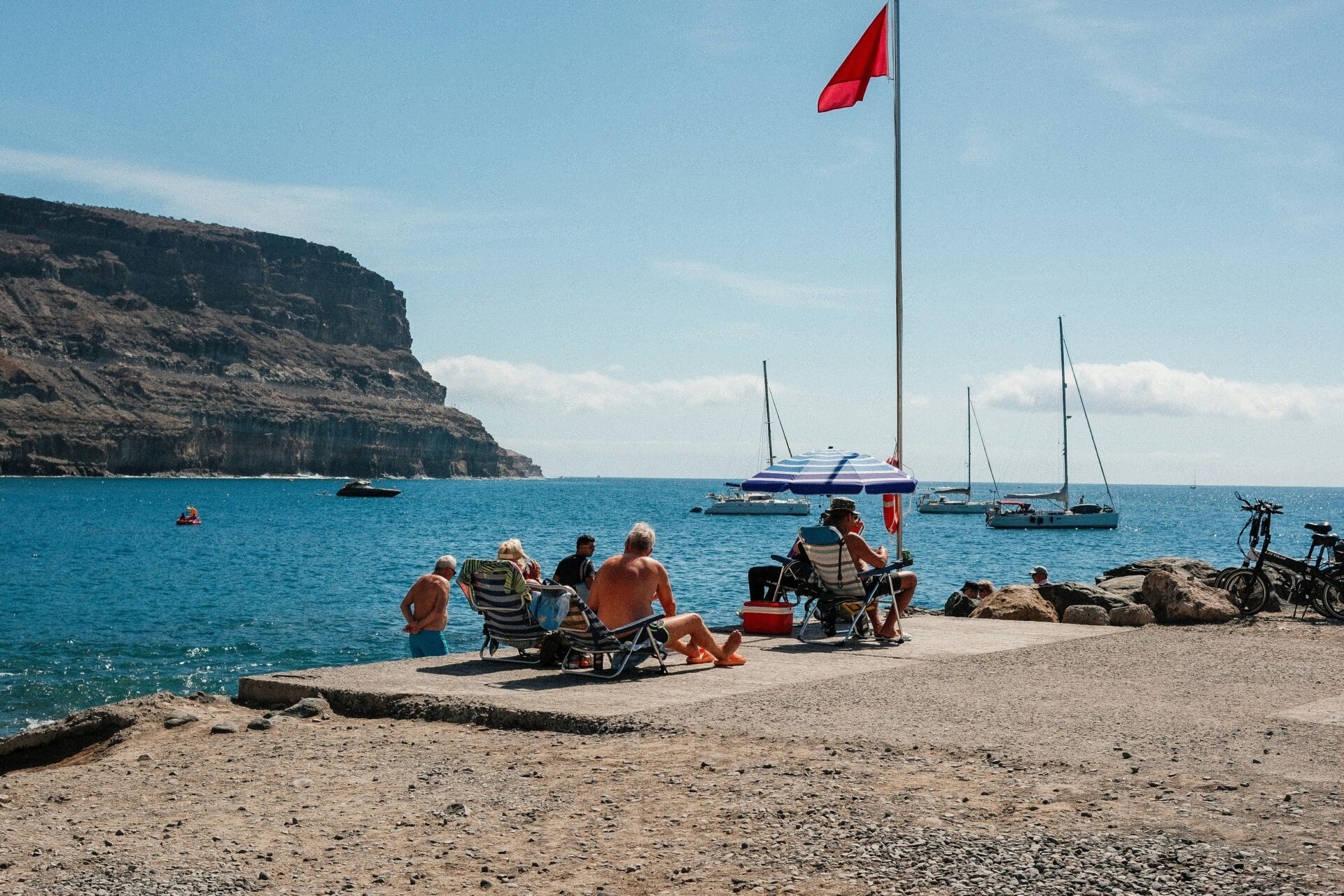
Family-Friendly Amenities
Puerto de Mogán beach is great for families. The water stays shallow for a good distance, so it’s safe for kids.
You can rent sunbeds and umbrellas all day, and the prices aren’t bad compared to other resort beaches.
Clean restrooms sit just behind the sand. Beachfront cafes serve up cold drinks and snacks, so you don’t have to wander far for lunch.
Lifeguards keep an eye on things during busy hours, so parents can relax while the kids play.
Handy amenities:
- Sunbed and umbrella rentals
- Public restrooms
- Cafes on the beach
- Lifeguard patrols
- Easy parking nearby
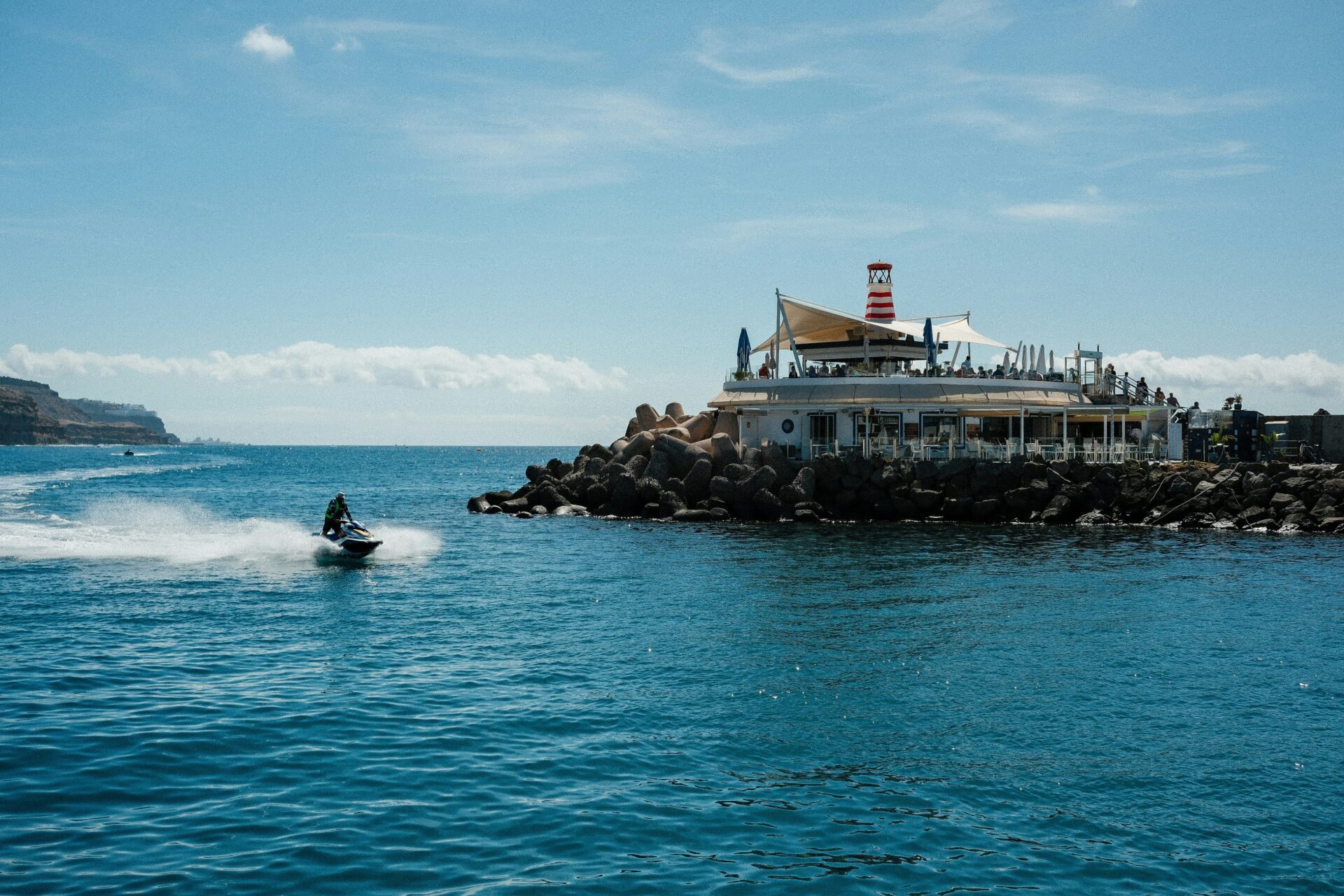
Snorkeling and Water Sports
The water here is clear, making it ideal for snorkeling. I found rocky patches at both ends of the beach where fish gather.
I spotted all sorts of colorful fish while snorkeling. Morning tends to offer the best visibility.
You can rent kayaks and paddleboards from local operators. The bay stays calm, so beginners don’t have to worry.
Fishing trips leave from the marina if you’re feeling adventurous. Some boats go deep-sea, others stick close to shore.
There’s even a submarine tour that takes you 25 meters below the surface. Glass-bottom boats are another fun option for seeing marine life without getting wet.
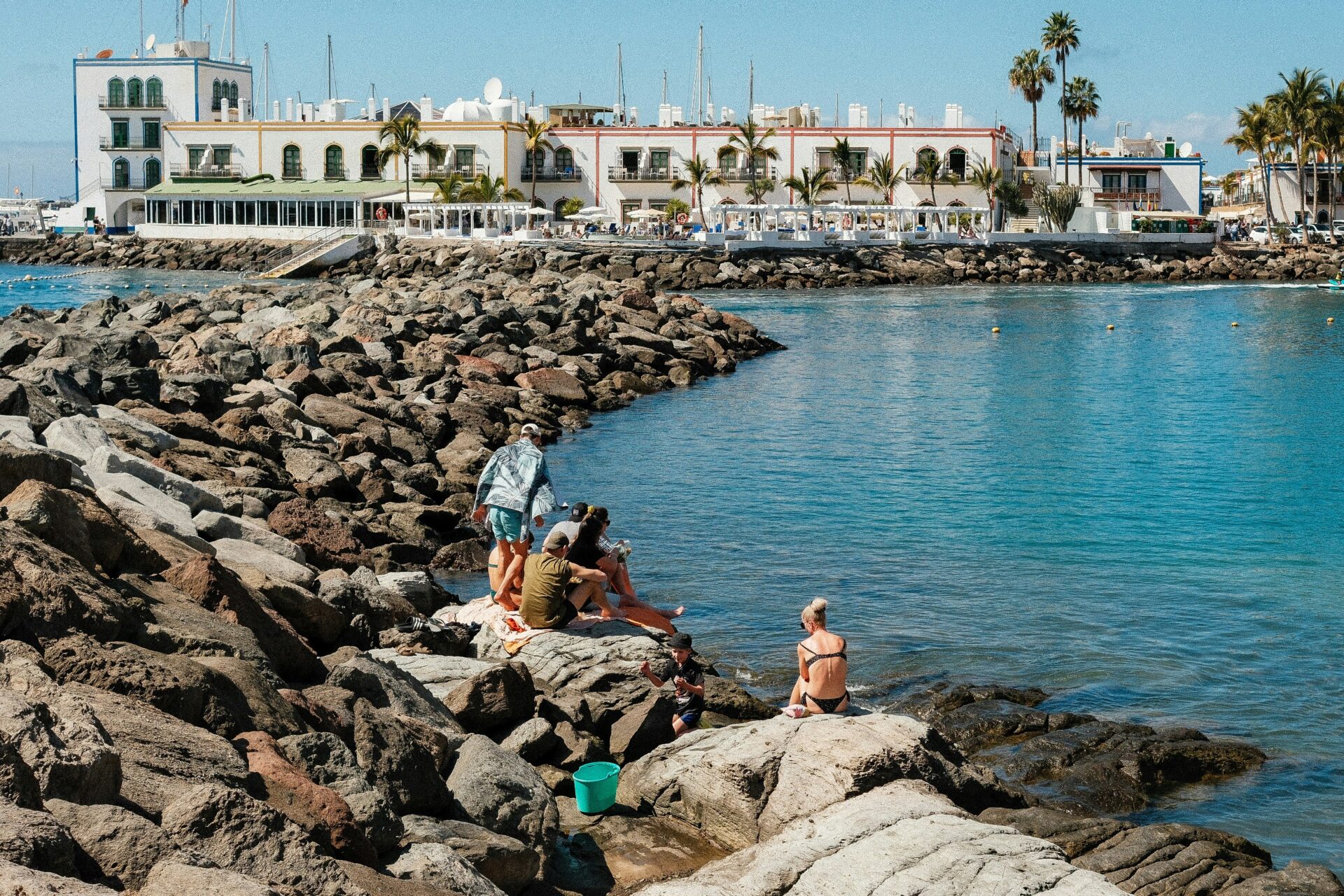
Local Flavor: Friday Market, Culture, and Gastronomy
Friday mornings, Puerto de Mogán bursts to life with its market. Local crafts, fresh produce, and a buzz of energy fill the harbor. I soaked up the town’s Canarian traditions and ate some of the best seafood of my trip.
Friday Market and Souvenir Shopping
Each Friday, the market takes over the waterfront from 8 AM to 2 PM. Vendors set up colorful stalls with handmade crafts, jewelry, and textiles.
I wandered between pottery, local honey, and all sorts of souvenirs.
Top finds:
- Hand-painted ceramics
- Aloe vera products
- Local wines and cheeses
- Canarian textiles
- Unique jewelry
Most sellers offer goods made right on Gran Canaria, and prices feel fair compared to the bigger resort shops.
You’ll also find fresh island produce—bananas, tomatoes, and tropical fruit straight from local farms.
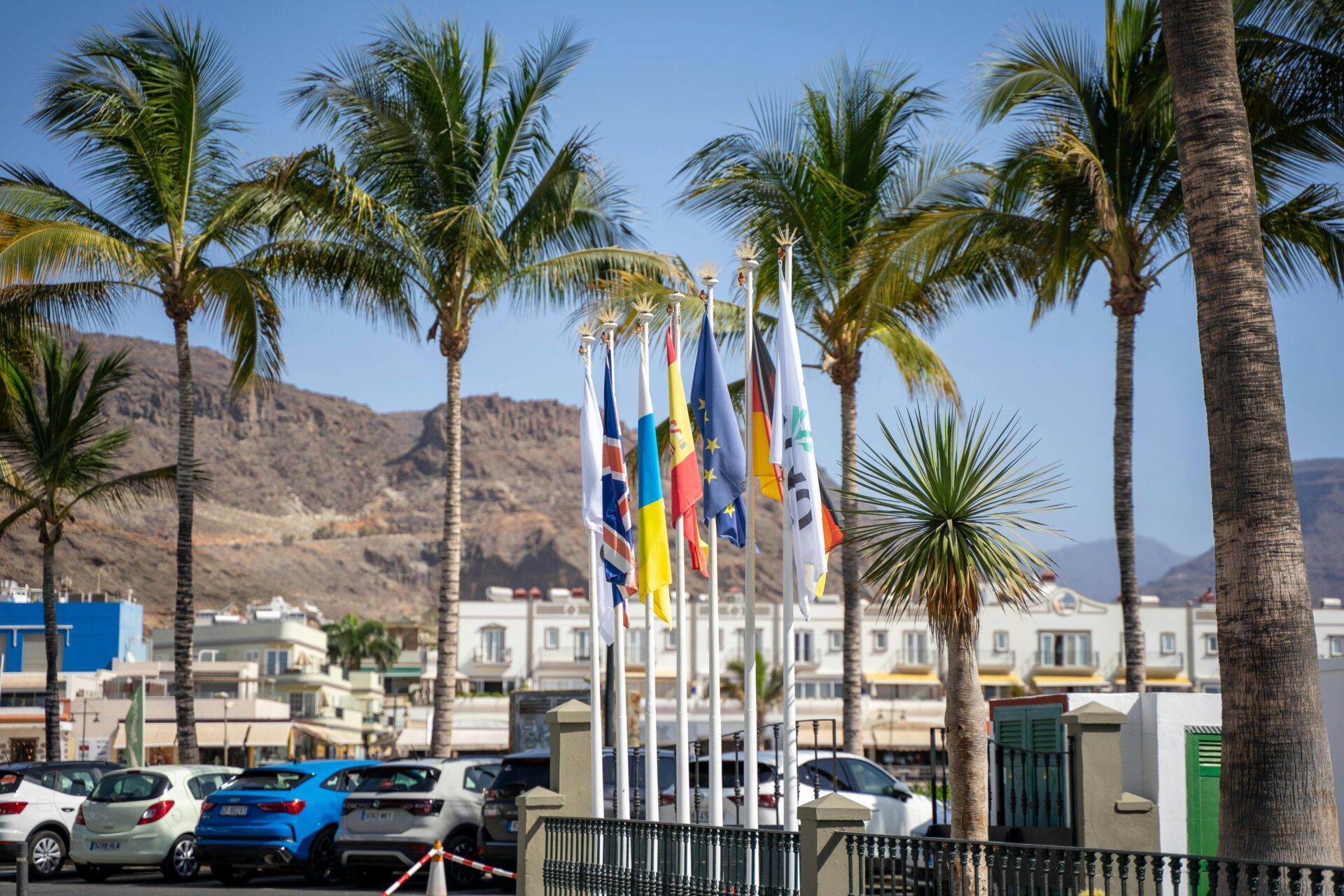
Discovering Local Culture and Traditions
Puerto de Mogán’s soul is its fishing heritage. Before tourists found it, this was just a quiet fishing village.
The houses burst with color—blues, yellows, pinks—mixing Canarian and Mediterranean styles.
Fishermen still bring in the catch every morning. I watched them unload nets just after sunrise.
Cultural highlights:
- Traditional “barquillos” fishing boats
- Summer fishing festivals
- Folk musicians playing by the harbor
- Canarian dance performances
Despite more visitors these days, the town keeps its authentic vibe. Locals mostly speak Spanish, but you’ll hear some German and English too.
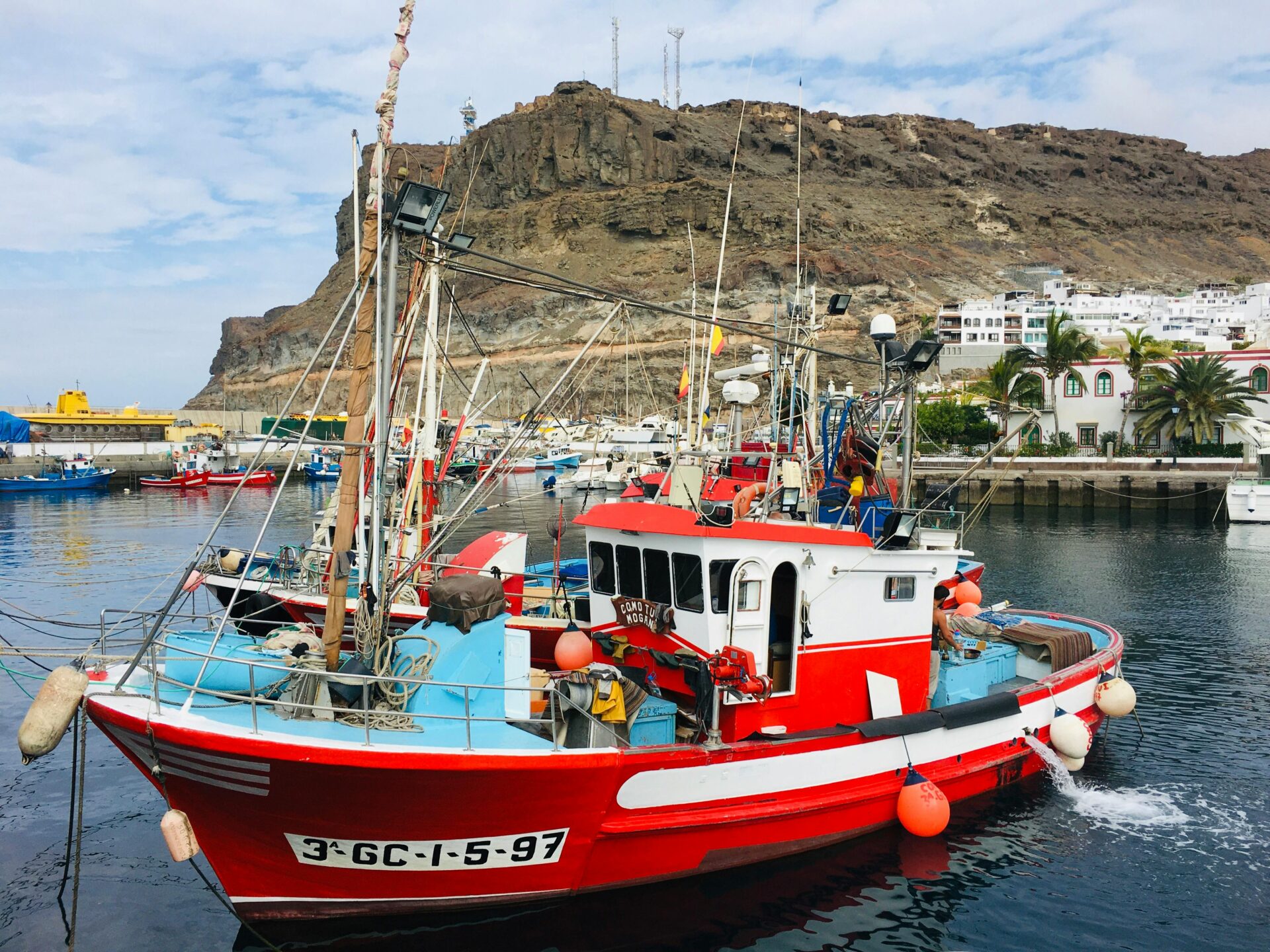
Sampling Fresh Seafood and Canarian Cuisine
Restaurants here serve up seafood that’s as fresh as it gets. Most buy straight from the fishing boats.
I couldn’t resist the local specialties. Papas arrugadas (those wrinkly potatoes) with mojo sauce showed up everywhere.
Dishes worth trying:
- Grilled catch of the day
- Seafood paella
- Sancocho (salted fish stew)
- Gofio (toasted grain flour)
Waterfront terraces make dining extra special. I loved eating while watching boats glide by.
Gran Canaria wines pair nicely with seafood. The volcanic soil gives them a distinct, almost mineral flavor.
If you wander away from the harbor, you’ll find cheaper eats. The main tourist spots charge a bit more, but the view can be worth it.
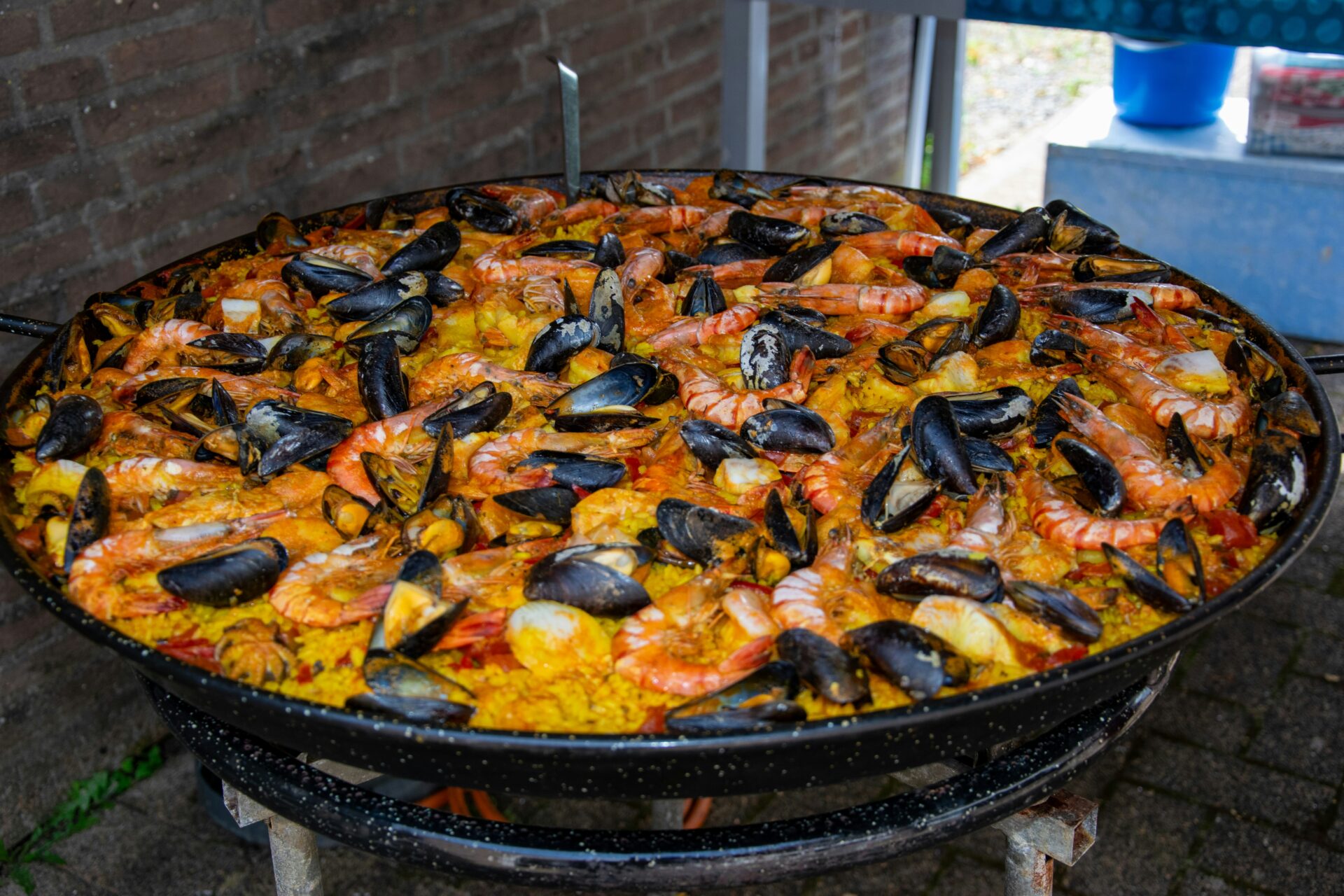
Scenic Stays: Accommodation and Surrounding Attractions
Picking a place to stay in Puerto de Mogán comes down to whether you want marina views from a hotel or a cozy apartment tucked in the colorful streets. The town makes a great base for exploring Gran Canaria’s south and checking out epic coastal viewpoints.
Charming Hotels and Apartments
Most of the best hotels cluster around the marina and beach. Hotel Villa de Mogán gives you direct views of the boats, while smaller boutique hotels line the canal-side lanes.
You’ll notice the Canarian style everywhere—white walls, splashes of color, and lots of flowers. Cordial Mogán Playa is a solid choice for families, with pools and plenty of space.
If you’re staying longer, apartment rentals work well. Many have balconies over the canals or marina, and kitchenettes for whipping up something with your market finds.
Book early, especially from December to March. The village is small, so rooms fill up fast.
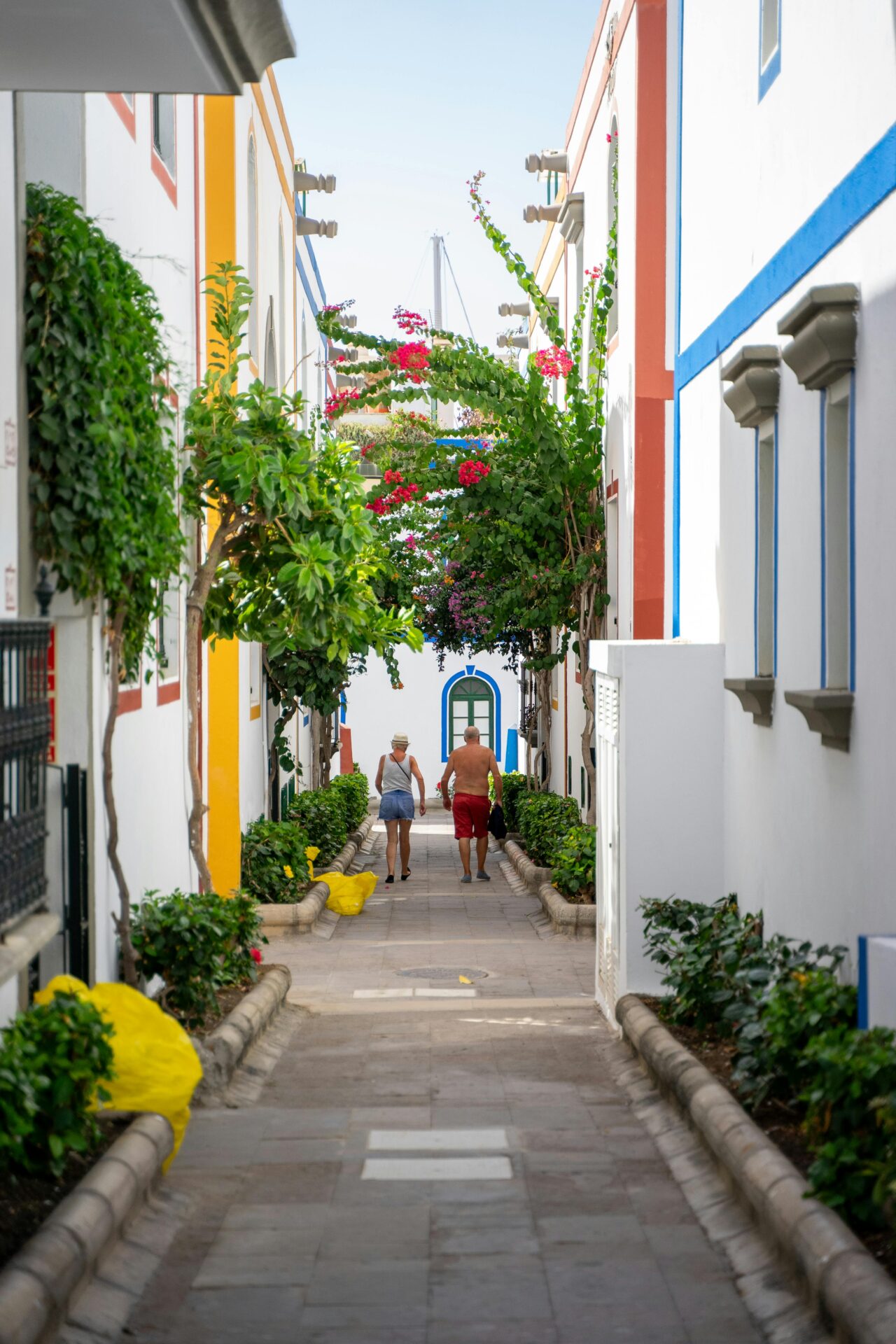
Views from the Mirador
The Mirador de Puerto de Mogán perches about 15 minutes uphill from the marina. I found the start of the marked hiking trail near the main road, and honestly, the climb warmed me up fast.
From the top, the views just spill out in every direction. I could spot the town’s canal system, the golden beach, and little boats bobbing in the marina below.
Early mornings really do give the best light for photos. The trail has some steep bits, so sturdy shoes make all the difference.
The mirador links up with longer hiking routes heading into Gran Canaria’s interior mountains. Those paths reveal even more dramatic overlooks along the southwestern coast.
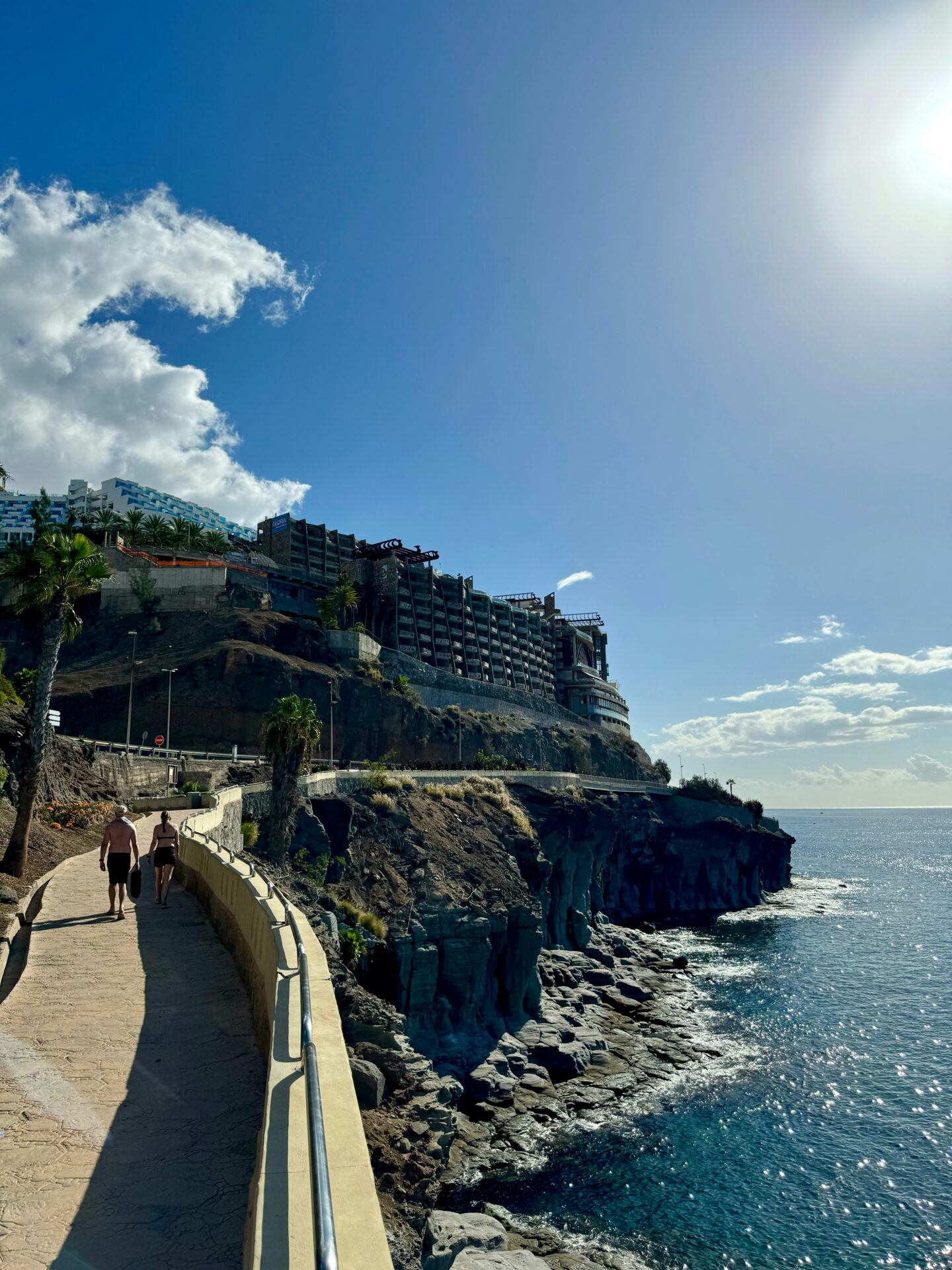
Day Trips to Gran Canaria and Beyond
Puerto de Mogán’s location makes it a great base for exploring southern Gran Canaria. Maspalomas sits about 30 minutes east, and those sand dunes are as wild as everyone says.
Getting to Playa del Inglés by bus or car felt super easy for a change of scene, shopping, or a bit of nightlife. It’s just a 25-minute drive along the coast.
Las Palmas de Gran Canaria, the capital, sits an hour north. Buses run straight from Puerto de Mogán’s main stop a few times each day.
Nearby ports run ferry services to other Canary Islands. I noticed that day trips to Tenerife are a big draw, with boats leaving from the larger marinas up and down this coast.
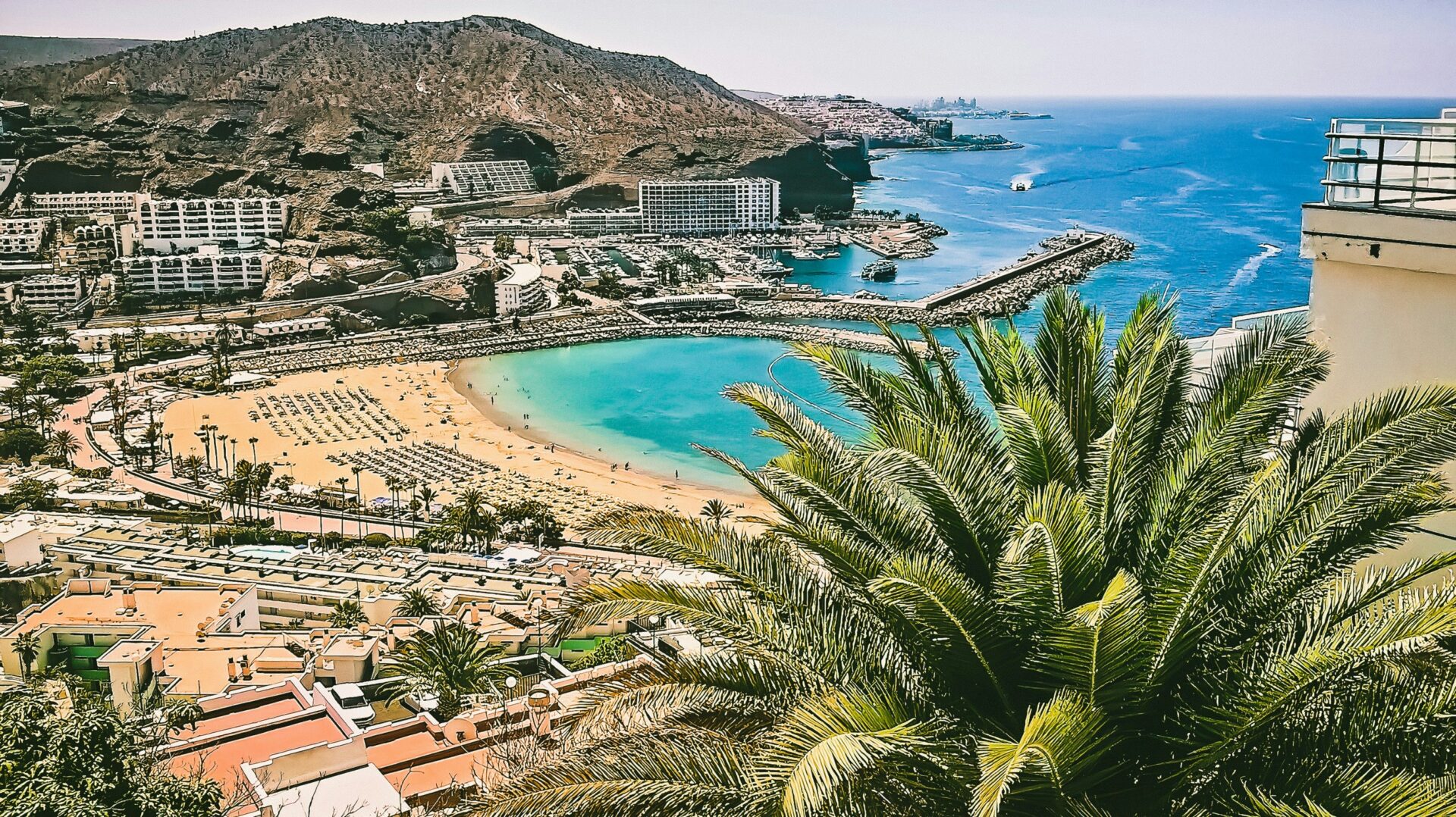
Getting There and Around: Travel Tips for Puerto de Mogán
Puerto de Mogán connects to the rest of Gran Canaria with reliable buses and easy airport transfers. The village itself? I wandered everywhere on foot—those narrow streets and waterfront paths just pull you in.
Public Transport Connections
Bus 91 leaves every hour between Las Palmas and Puerto de Mogán. The ride takes about an hour, and the window views are worth grabbing a seat for.
If you’re coming from southern resorts like Maspalomas or Playa del Inglés, hop on bus 32. It links up the main tourist spots without fuss.
I found the bus system both reliable and affordable. Most rides across the island cost around €3-4.
Key Bus Routes:
- Bus 91: Las Palmas ↔ Puerto de Mogán (hourly)
- Bus 32: Maspalomas/Playa del Inglés ↔ Puerto de Mogán
- Bus 90: Heads out to other western towns
Check schedules online before heading out. On Sundays and holidays, buses run less often, so plan ahead.
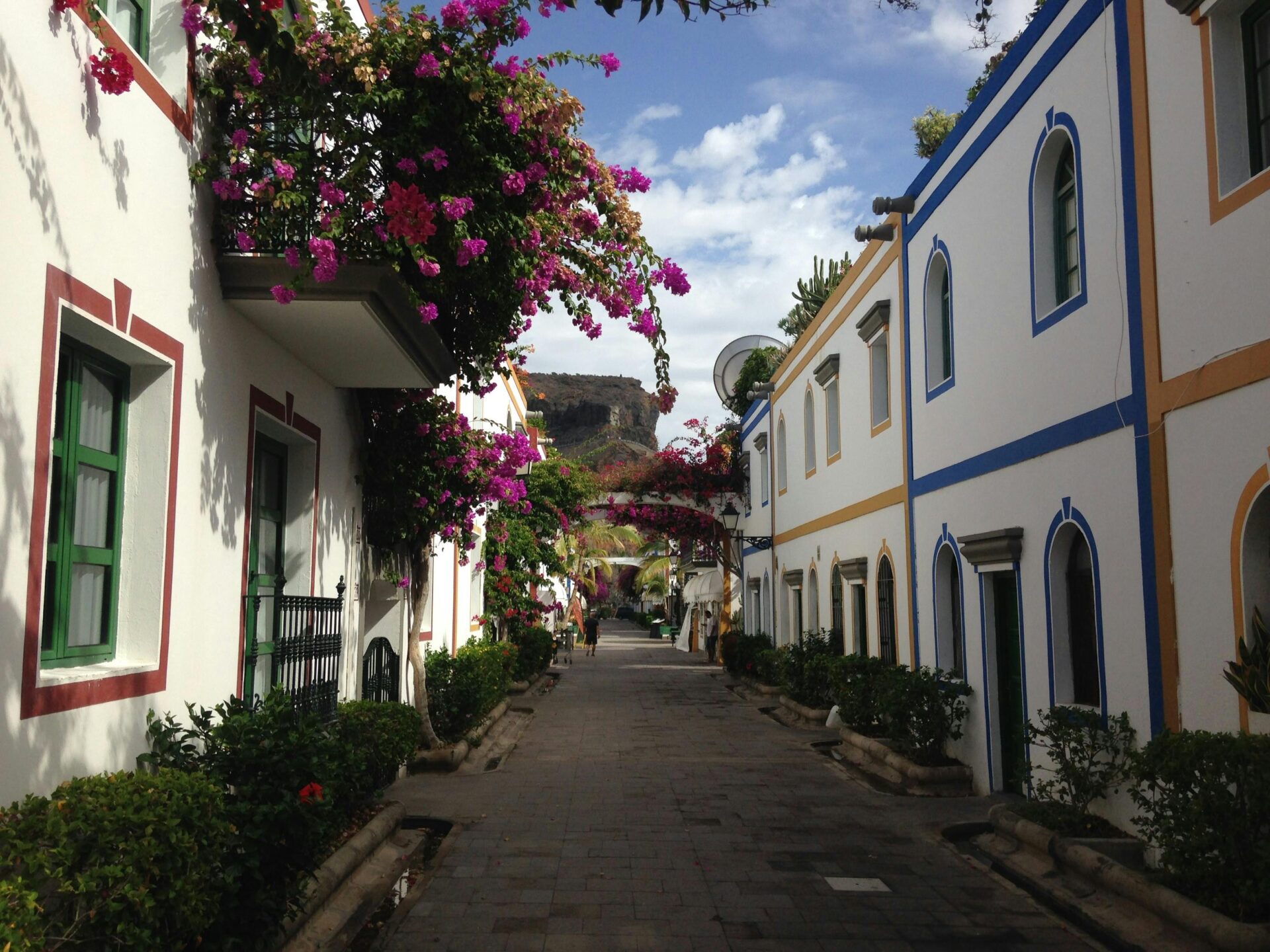
Arriving from Las Palmas Airport
You’ve got three main ways to get from Las Palmas Airport to Puerto de Mogán. It really depends on your budget and how much time you want to spend in transit.
Bus 91 is the cheapest and pretty straightforward. The direct ride takes about an hour and costs less than €4.
Shared shuttles cost a bit more but drop you right at your door. They do make a bunch of stops, so you might be on the road longer.
Taxis charge €70 or more for the trip. I’d only go this route if you’re traveling as a group or lugging a lot of bags.
If you’re traveling in high season, book shuttles ahead of time. The airport bus stops are easy to spot right outside the terminal.
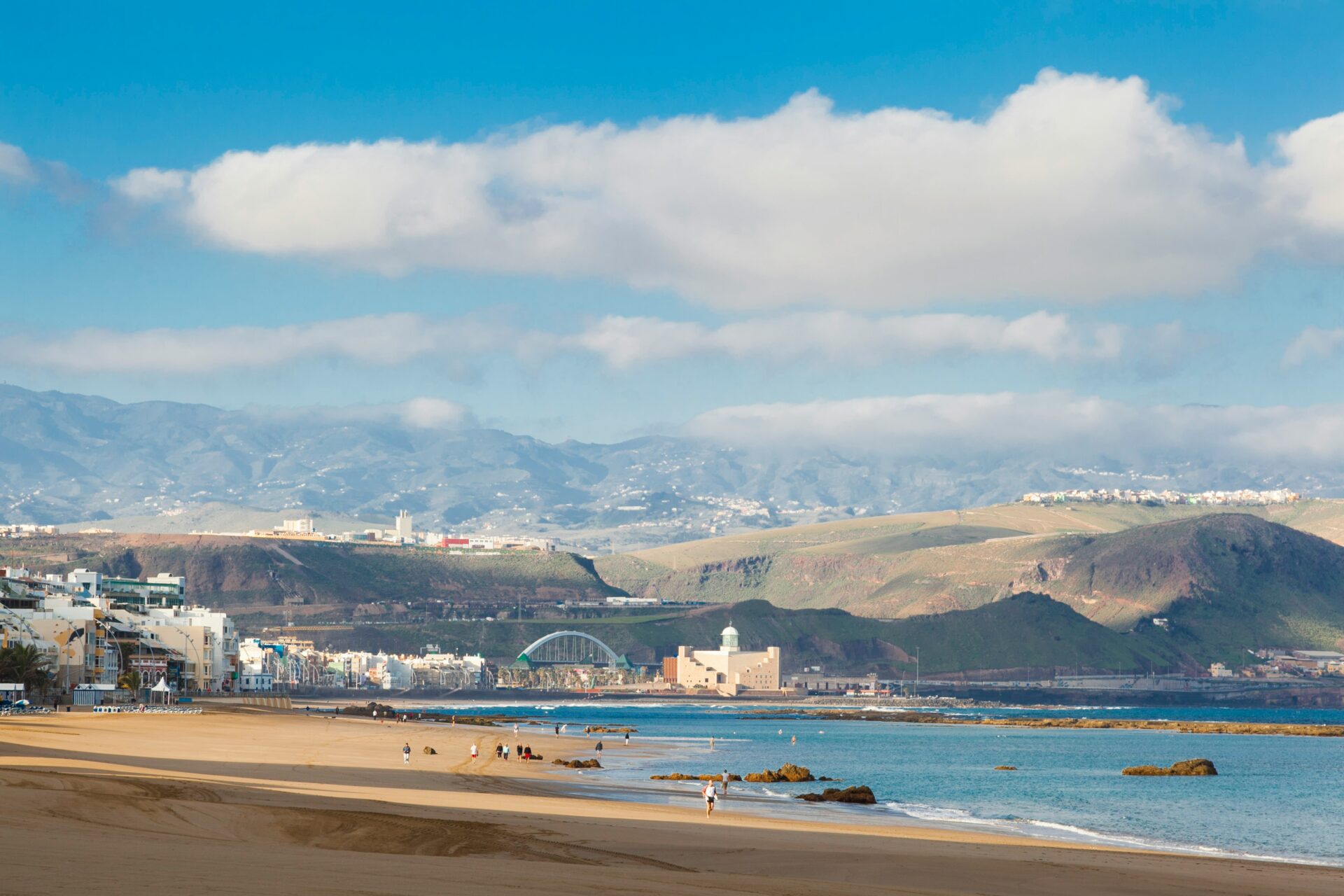
Navigating the Village
Puerto de Mogán isn’t huge—you can pretty much wander the whole place on foot without breaking a sweat. The village unfolds from the marina all the way to the old fishing quarter, Los Ricos.
You’ll find most of the action clustered around the harbor and the beach. Honestly, it never took me more than 15 minutes to stroll from one end to the other.
If you’ve rented a car, you can snag a spot in one of the public parking lots, though on Fridays when the market’s in full swing, those spaces disappear fast.
The marina area feels flat and easy to get around, which is a relief. But if you’re up for a bit of a climb, the mirador viewpoint waits at the top—just brace yourself for 257 stone steps winding through narrow, sun-bleached streets.
Wandering the old quarter can feel like navigating a friendly little maze. Street signs pop up just when you need them, pointing you toward main sights like the archaeological site.

